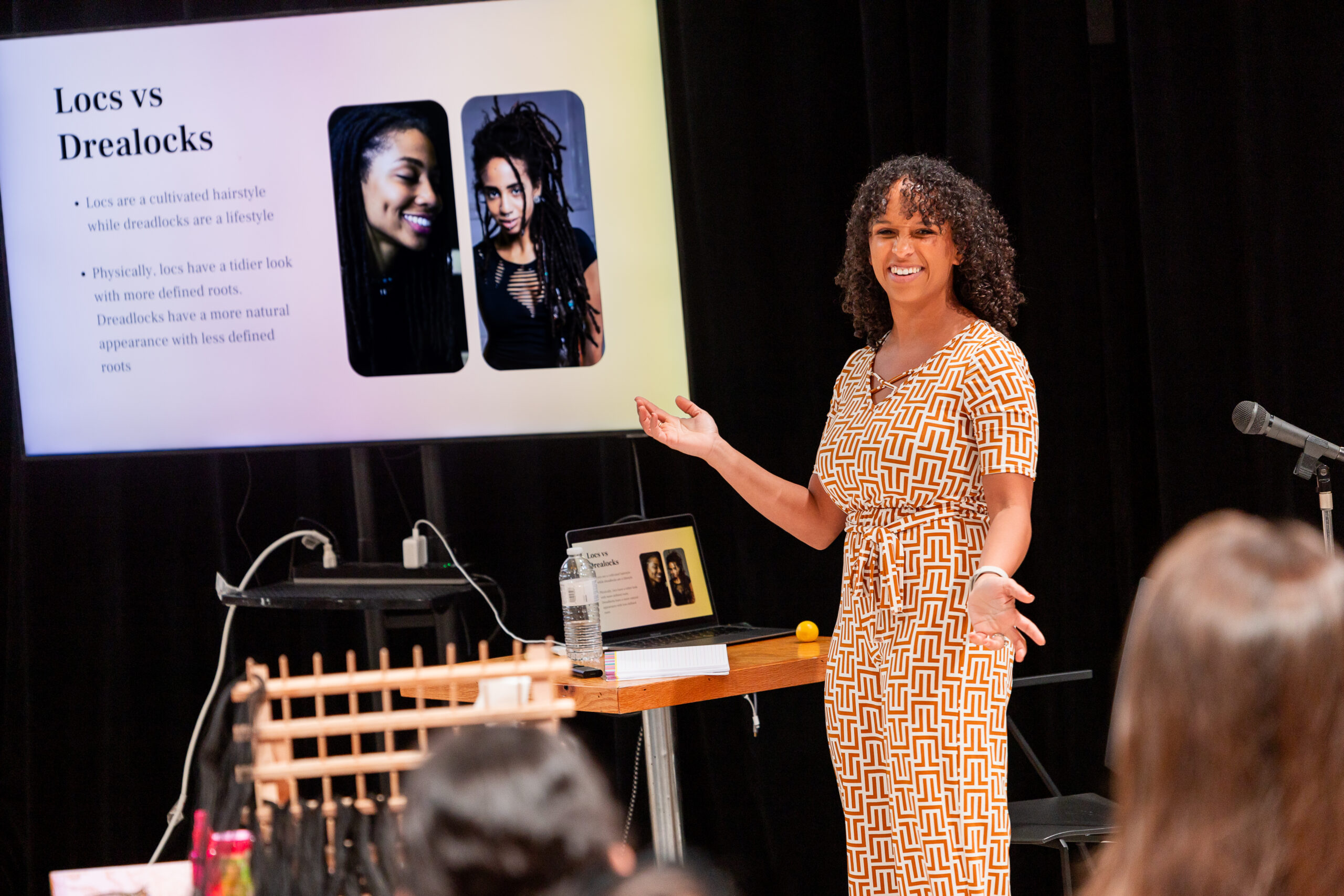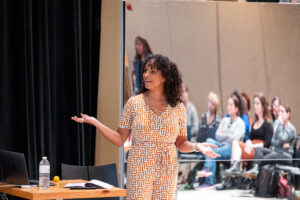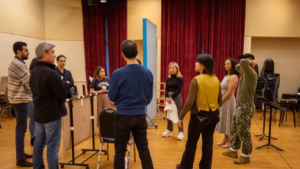Why EDI for the Arts?
Corporate approaches don’t work for creative spaces.
Colorful casting, anti-racism statements and high-level trainings are just the tip of the iceberg for Equity, Diversity & Inclusion success. Arts spaces require nuanced, compassionate & flexible support.
Here’s why.

‘The Show Must Go On’
All the training in the world can’t stop the machine of a show. There’s no time and limited resources devoted to EDI work. But when artists continue to push through, no matter what, there are often lasting, negative (and sometimes traumatic and disastrous) effects.
Ever-Changing Work Environments
Artists charged with leadership, who direct, play, design or perform for each company, often don’t have access to EDI trainings or support. We also create new environments each time we meet to create art, and so we must create adequate systems to support each new space.
Front-Facing Diversity & Social Pressure
Critics want to see diversity on stage and screen right now. This often leads to short-term, performative action for applause and likes rather than deep, systemic change. And underrepresented artists get charged with the (unpaid) labor of EDI work on top of their job responsibilities.
Challenging & Triggering Creative Material
Unlike in other fields, artists are required to divulge their most vulnerable selves while at work, no matter the environment. Problematic classics, new works that address hot button issues, and everything in between must be navigated with intention and care.
‘The Show Must Go On’
All the training in the world can’t stop the machine of a show. There’s no time and limited resources devoted to EDI work. But when artists continue to push through, no matter what, there are often lasting, negative (and sometimes traumatic and disastrous) effects.
Ever-Changing Work Environments
Artists charged with leadership, who direct, play, design or perform for each company, often don’t have access to EDI trainings or support. We also create new environments each time we meet to create art, and so we must create adequate systems to support each new space.
Front-Facing Diversity & Social Pressure
Critics want to see diversity on stage and screen right now. This often leads to short-term, performative action for applause and likes rather than deep, systemic change. And underrepresented artists get charged with the (unpaid) labor of EDI work on top of their job responsibilities.
Challenging & Triggering Creative Material
Unlike in other fields, artists are required to divulge their most vulnerable selves while at work, no matter the environment. Problematic classics, new works that address hot button issues, and everything in between must be navigated with intention and care.
Client Testimonials
“Working with Kira Troilo and Art & Soul Consulting has made an immeasurable impact, both on SpeakEasy Stage Company as an arts institution and on me as a person and arts leader. Kira leads with compassion and empathy, creating a space where people of all experiences and backgrounds feel heard and valued. She has been instrumental in problem-solving, protocol-setting, and community-building – all of which have helped us to grow and build our own safe and productive space. I can honestly say that we would not be where we are without Kira and I would happily work with her any time, any place.”
– Alex Lonati, Community & Artistic Programs Manager, SpeakEasy Stage Co.
“EVERY production needs a Kira.”
– Cast member, The Color Purple, Umbrella Stage Company
“There’s a wariness about asking for anything and not stepping on anyone’s toes. After talking to Kira, I felt my shoulders relax.”
– Melory Mirashrafi, Director
“Kira genuinely connects to people and speaks openly and honestly about her experiences. As Assistant Director for the play Admissions at SpeakEasy, she shared personal details about her experiences as a Black, biracial woman in predominantly white spaces. These thoughts were essential to our deeper understanding of the nuanced racial dynamics at play in our show.”
– Paul Daigneault, Producing Artistic Director, SpeakEasy Stage
“Moonbox has had the pleasure of working with Kira Troilo in several capacities over the past several years. In addition to sharing her exceptional talents as a musical theater and dramatic performer, she has taken on additional responsibilities during production as Dance Captain, as well as brought her creative design talents to Moonbox as a Choreographer. Most recently, Kira has served our Company as a member of our Advisory Council where she has been an essential voice in Moonbox’s examination of its creative and social missions, and the Company’s commitment to building competency and capacity around issues of Equity, Diversity and Inclusion. As an advisor to our Company, Kira brings a quality of strong and gentle leadership. She is at once an engaged listener, a deep thinker, and a creative problem-solver. Her honesty and empathy help to bring a sense of calm to the room, and also help to build a safe space for constructive and genuine dialogue.”
– Sharman Altshuler, Producing Artistic Director, Moonbox Productions
“Kira Troilo is a skilled guide and bridge builder in conversations about diversity, equity, and inclusion. She speaks and acts from her lived experience in a way that invites reflection, conversation, and action. Her approach is warm and engaging even as she calls people to be accountable for actions and attitudes that are uncomfortable to acknowledge. She created a space for members of our group to be curious and vulnerable, tilling the soil for transformation. An adept facilitator of group process, Kira also made herself available for one-on-one conversations. The fact that almost every member of our group took her up on the offer is a testament to the trust she engendered. I am deeply grateful for the clarity and generosity she offered during a difficult time of discernment and growth.”
– Elizabeth Norton, Director of Music Ministry, First Parish in Concord, MA






